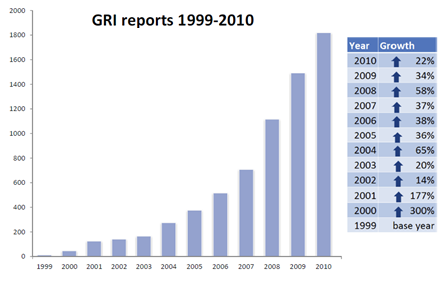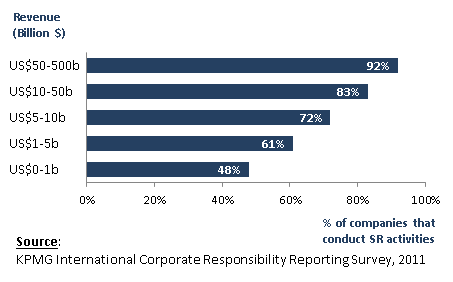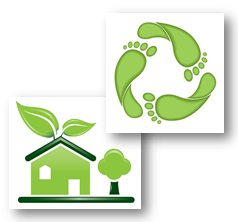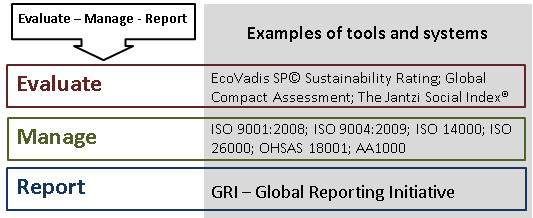|
|
| Social Responsibility is Growing in Popularity |
Back to Top |
| The terms Social Responsibility and Sustainability are closely related as they both
cover economic, environmental, and social aspects. Companies that report results
of their activities in these three areas use various names for their reports, such
as: Corporate Responsibility Report, Social Responsibility Report, Business Sustainability
Report, Sustainable Development Report, Global Citizenship Report and the like.
|
 |
| The number of companies that produce such reports is growing exponentially. The
graph below shows the growth of reports which were produced in accordance with GRI
[Global Reporting Initiative] Guidelines and registered on the GRI website.
|
| While the list of corporate responsibility assessment tools and implementation guidelines is large and diverse, there are seven areas which are common for most of the tools which are listed below. |
- Organizational Governance
- Human Rights
- Labor Practices
- The Environment
- Fair Operations
- Consumer Issues
- Community Involvement
|
| Based on a survey conducted by KPMG in 2011, 95% of the 250 largest companies in
the world established SR programs and report on these annually. Large
companies are leaders in corporate social responsibility.
|
 |
| Companies that conduct SR activities see these activities as a driver of financial value that comes from two sources. The first source is direct cost saving through more efficient use of energy, water, and other resources. The second source of financial value is enhanced reputation of an organization that attracts more customers, investors, talented employees, and other stakeholders. |
| The chart below illustrates SR drivers of financial value as identified by the survey conducted by KPMG in 2011. |
 |
|
|
| Social Responsibility and International Standards |
Back to Top |
| The concepts of sustainability and social responsibility also influenced the development of international standards. |
 |
| For instance, in 2005-2010 a strategic plan of the International Organization for
Standardization (ISO) was named “Horizon 2010: Standards for a Sustainable World”.
In a strategic plan 2010-2015 Solutions to Global Challenges, ISO declared that
“ISO’s portfolio of over 18 500 standards provides business, government and society
with practical tools for all three dimensions of sustainable development: economic,
environmental and social.”
|
| Here are just some examples of international standards in economic, environmental and social areas: |
|
|
| Measuring Social Responsibility |
Back to Top |
| A number of universal tools have been created to evaluate social responsibility and business sustainability of an organization. Here are the most popular ones: |
|
|
 |
| The following aspects are covered by this core subject of SR: |
- Prevention of pollution
- Sustainable resource use
- Greenhouse gas emissions and energy efficiency
|
| |
 |
| Some countries and industries created their own assessment tools and set of guidelines. Here are some examples |
|
|
| The following aspects are covered by this core subject of SR: |
- Anti–corruption
- Responsible political involvement
- Fair competition
- Promoting social responsibility
|
| |
| Some assessment tools and recommendations are focused on specific aspects of corporate responsibility, for example: |
 |
|
|
| The following aspects are covered by this core subject of SR: |
- Fair marketing, information and contractual practices
- Protecting consumers’ health and safety
- Product and service labeling
- Consumer data protection and privacy
|
|
|
| Managing Social Responsibility |
Back to Top |
| SR programs are based on the same key processes and principles as any other management system including the following: policy development, process definition, internal and external audits, management reviews, and continual improvements. |
|
ISO management systems standards, especially ISO 9001 quality management systems can serve as a perfect platform for the establishment and maintenance of SR programs.
|
 |
|
|
|
|
| More Social Responsiblity facts and practical case studies in our training course. |